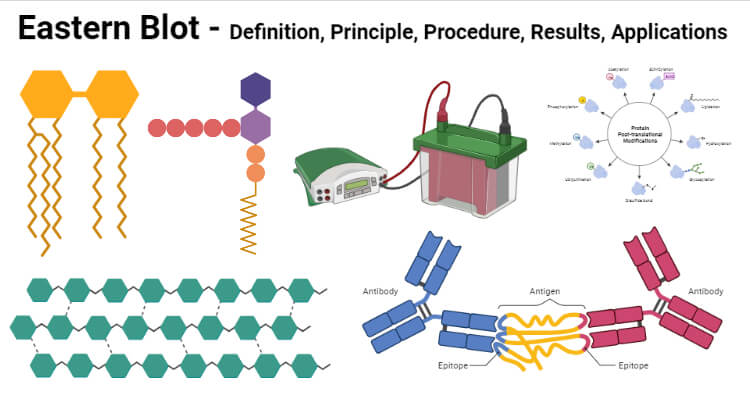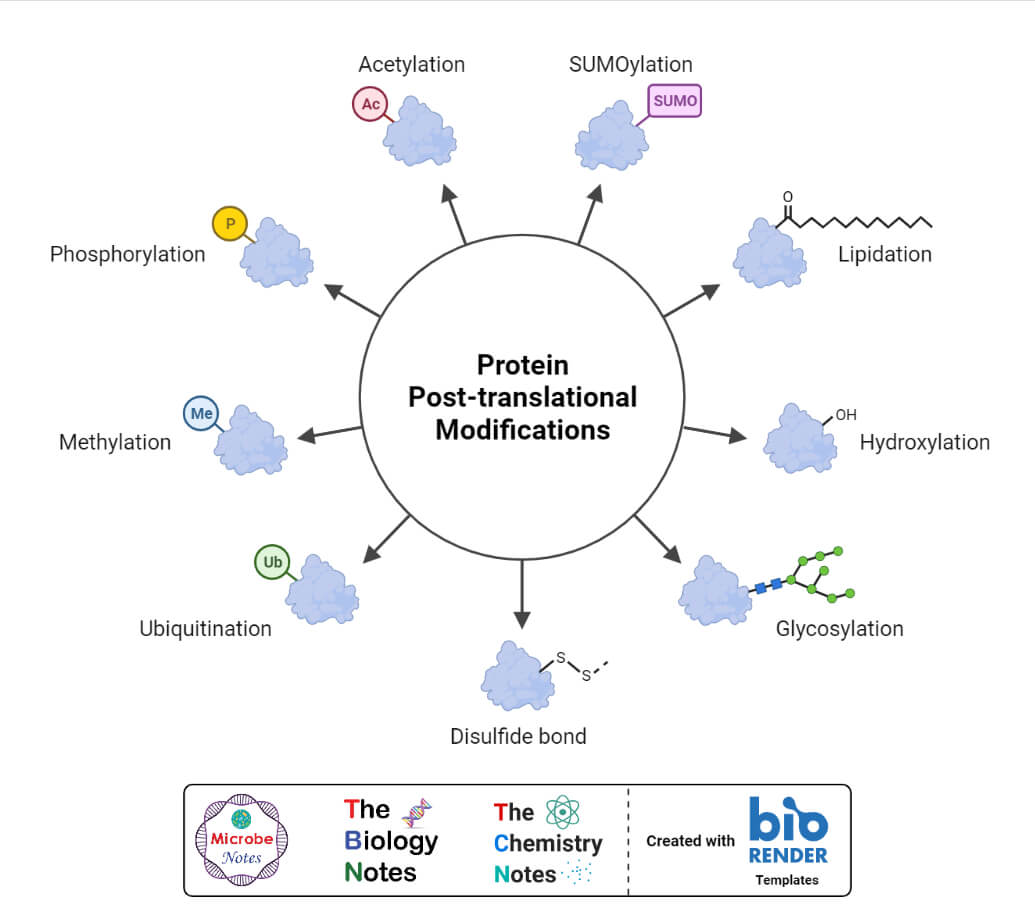Eastern blot is a molecular biology technique that is used to detect post-translational modifications in proteins and the presence of components like lipids and carbohydrates.
- Eastern blot was discovered as an extension of the more popular western blotting technique.
- Eastern blot is primarily performed to detect the presence of biomolecules in different proteins, which can be used to study the differences in the post-translational modifications in different species.
- The principle and procedure of the method are similar in all blotting techniques; however, the molecule or particle to be detected might differ.
- Eastern blot has been slightly modified to form a new form of blotting technique called far-western blotting, which is used to study lipids that are separated by chromatography.

Interesting Science Videos
Principle of Eastern Blot
- The principle of eastern blotting is similar to the principle of other blotting techniques.
- It is an immunoblotting technique that depends on the specificity between the protein of interest and a probe in order to identify the biomolecule of interest in a mixture of different molecules.
- In the case of eastern blotting, the proteins are electrophoresed on polyacrylamide gel in order to separate them from the mixture.
- The proteins are then transferred to a nitrocellulose or nylon membrane, where the target molecules are detected by their specific interaction with the probes.
- The identification of the interaction can be made either through the use of a radioactive probe or by the use of a secondary tagged molecule like in the case of ELISA.
- Eastern blotting, like all other blotting techniques, is based on the antigen-antibody interactions where the specificity and extent of interaction determine the result.
- Eastern blotting is similar to lectin blotting as both of them are primarily used for the detection of carbohydrate epitopes on proteins and lipids.
- The use of eastern blotting for the detection of smaller molecular compounds is essential as the detection of these molecules cannot be achieved by immunostaining.
Requirements
The following are the requirements for eastern blotting;
- Thin Layer Chromatography Plate
- Transfer Membrane
- NaIO4 solution
- Blotting Solution
- Na2CO3/ NaHCO3
- Stainless steel plate
Procedure of Eastern Blot
The following is the protocol for eastern blotting;
- The TLC plate developed after chromatography is covered with the PVDF membrane in order to transfer the contents from the plate to the membrane either by pressing or heating.
- The transfer of components from the TLC plate to the membrane can also be obtained by passing electric current through the structure.
- The membrane is then treated with sodium periodide to fix the components on the membrane. It is incubated in the solution for 1 hour and is washed with water.
- The membrane is immersed in BSA solution at alkaline condition (Na2CO3/NaHCO3 buffer) to prepare hapten-BSA conjugate on the membrane.
- It is blocked with 5% skim milk/PBS for 3 hours and is washed with PBS. The membrane was treated by MAb, which detects the hapten.
- The interaction between the MAb and the hapten forms the basis of eastern blotting for its detection.
- The MAb can then be detected by the addition of a second antibody labeled with peroxidase.
- Finally, a substrate is added to the membrane, which helps in the visualization of the second antibody via staining.
Result Interpretation
- The result of eastern blotting depends on the type of label used in the second antibody.
- The positive result is indicated by the appearance of color or radioactivity.
- The negative result is indicated by the lack of color or radioactivity.
Applications of Eastern Blot
- The most important application of eastern blotting is the analysis of post-translational modifications in proteins.
- The technique has been used to identify and purify different plant products.
- Eastern blotting also allows the detection of modifications in proteins of different origins.
- It also helps to study the nature of interactions between different molecules by the use of ligands.
- Eastern blotting has been extensively used to compare modifications in proteins obtained from different bacterial species.
- It is also used to detect carbohydrate epitopes in different proteins.

Limitations of Eastern Blot
- The technique is complicated and contains multiple steps that are prone to errors. It also requires trained personnel for use.
- The technique requires the use of a significant amount of sample, which might be an issue in the case of productions with little yield.
- The accurate quantification of the proteins and biomolecules is difficult with eastern blotting.
- In some cases, the interaction between the probe and the biomolecules might result in the destruction of the tertiary structure of the protein.
References
- Nicholas MW, Nelson K. North, south, or east? Blotting techniques. J Invest Dermatol. 2013 Jul;133(7):e10. doi: 10.1038/jid.2013.216. PMID: 23760052.
- Jonathan M. Gershoni, George E. Palade. Protein blotting: Principles and applications. Analytical Biochemistry. Volume 131, Issue 1. 1983. Pages 1-15. https://doi.org/10.1016/0003-2697(83)90128-8.
- Gershoni, J. M., & Palade, G. E. (1983). Protein blotting: Principles and applications. Analytical Biochemistry, 131(1), 1–15. doi:10.1016/0003-2697(83)90128-8
- Hiroyuki Tanaka, Waraporn Putalun, Yukihiro Shoyama, “Fingerprinting of Natural Product by Eastern Blotting Using Monoclonal Antibodies”, Chromatography Research International, vol. 2012, Article ID 130732, 7 pages, 2012. https://doi.org/10.1155/2012/130732
- Taki T., Gonzalez T., Goto-Inoue N., Hayasaka T., Setou M. (2009) TLC Blot (Far-Eastern Blot) and Its Applications. In: Kurien B., Scofield R. (eds) Protein Blotting and Detection. Methods in Molecular Biology (Methods and Protocols), vol 536. Humana Press, Totowa, NJ. https://doi.org/10.1007/978-1-59745-542-8_55
Sources
- https://en.wikipedia.org/wiki/Eastern_blot – 14%
- https://www.bosterbio.com/protocol-and-troubleshooting/western-blot-principle – 5%
- https://en.wikipedia.org/wiki/Western_blot – 4%
- https://www.academia.edu/9434790/Qualitative_Analysis_of_Carbohydrate – 2%
- https://www.sciencedirect.com/topics/neuroscience/southern-blot – 2%
- https://www.sciencedirect.com/science/article/pii/S0022231315308747 – 1%

That was very clear and easy to understand.
Thank you.
structure and composition of virus
isolation and cultivation of bacterial plaques
cloning startagies
isolation and cultivation of bacteria
please give me notes on it…..